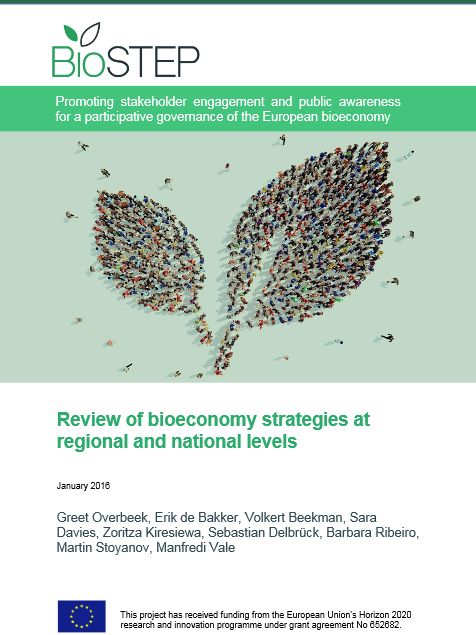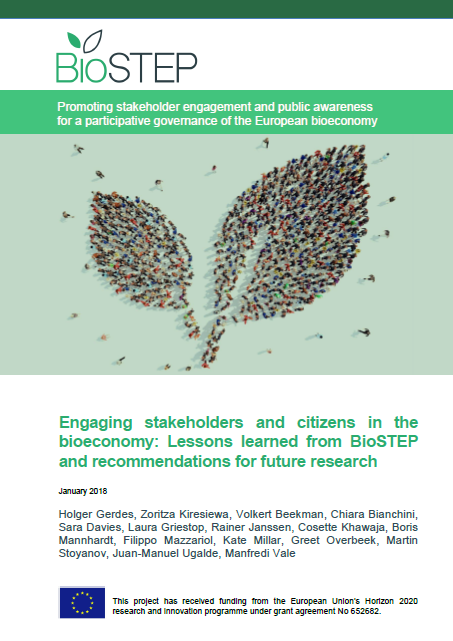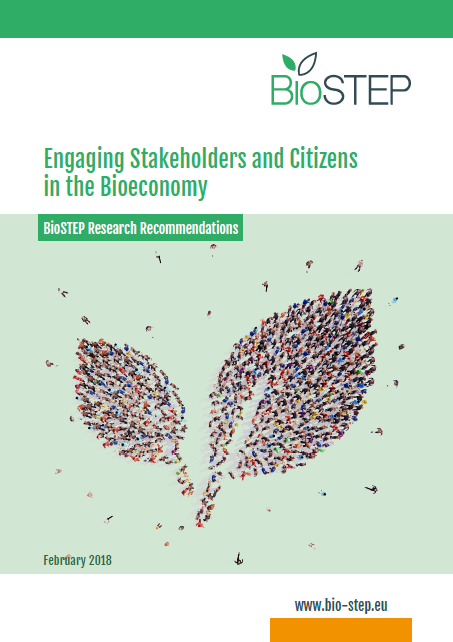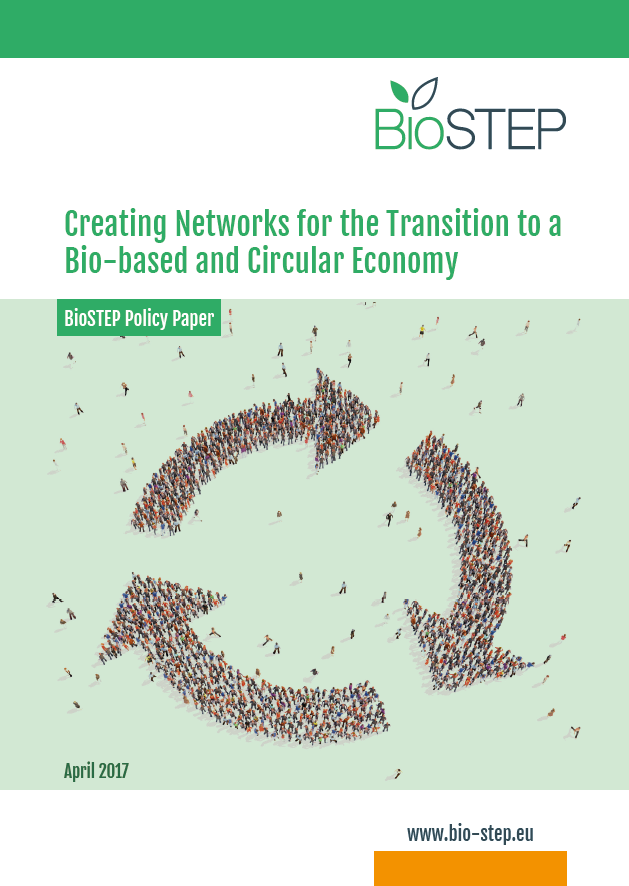Review of Bioeconomy Strategies at Regional and National Levels
Promoting stakeholder engagement and public awareness for a participative governance of the European bioeconomy
- Publication
- Citation
Overbeek, Greet; Erik de Bakker; Zoritza Kiresiewa 2016: Review of Bioeconomy Strategies at Regional and National Levels. Promoting stakeholder engagement and public awareness for a participative governance of the European bioeconomy.
Overbeek, Greet; Erik de Bakker; Zoritza Kiresiewa 2016: Review of Bioeconomy Strategies at Regional and National Levels. Promoting stakeholder engagement and public awareness for a participative governance of the European bioeconomy.
Contact
- Language
-
English
- Authorship
-
Greet Overbeek (LEI)Erik de Bakker (LEI)Volkert Beekman (LEI)Sara Davies (EPRC)Sebastian Delbrück (BIOCOM)Barbara Ribeiro (UNOTT)Martin Stoyanov (BIA)Manfredi Vale (AGHE)
- Funding
-
European Commission, Directorate-General Research & Innovation (DG Research & Innovation), International - Year
- Dimension
- 78 pp.
- Project
- Project ID
- Table of contents
-
Click to show full table of contents
1. Introduction
2. Approach and methodology
2.1 National bioeconomy strategies
2.2 Regional bioeconomy strategies
2.2.1 Technological Innovation Systems (TIS)
2.2.2 Bioeconomy clusters: networks and production chains
2.2.3 Structure and key assets
2.2.4 Development phases of technological innovation
2.2.5 Key processes: seven functions
2.2.6 Bioeconomy sectors, case study regions and questions
3. National bioeconomy strategies
3.1 Top-down or bottom-up
3.2 Industrial leadership or primary production based
3.3 Regional Stakeholders
3.4 Global Stakeholders
3.5 Societal Stakeholders
4. Regional bioeconomy strategies
4.1 Description, history and phase of development
4.2 Current situation of clusters and participative governance
4.4 Overview of case studies
5. Conclusions and discussion
5.1 Public engagement is there, but just starting
5.2 Discussion: TIS, or something more?
Annex I. Case study papers
1. Stara Zagora region (Bulgaria)
2. Veneto Porto Marghera bio-refinery (Italy)
3. The Lombardy Green Chemistry cluster (Italy)
4. Norwich Research Park (UK)
5. York Biovale (UK)
6. North Rhine-Westphalia (Germany)
7. Saxony-Anhalt (Germany)
8. Northeast Netherlands
9. Biobased Delta (Netherlands)
10. Industries & Agro-resources (France)
11. Food+i La Rioja (Spain)
12. Satakunta (Finland)
13. Västra Götaland (Sweden)
14. Ghent Bioeconomy Valley (Belgium)
Figures
Figure 1: Organisational structure of a biocluster
Figure 2: Phases of development
Figure 3: Taxonomy of the main bioeconomy product categories - Keywords
-
Bulgaria, Veneto Porto Marghera, Italy, Lombardy, Norwich Research Park, UK, United Kingdom, York Biovale, North Rhine-Westphalia, Saxony-Anhalt, Germany, Northeast Netherlands, France, La Rioja, Spain, Satakunta, Finland, Västra Götaland, Sweden, Ghent Bioeconomy Valley, Belgium
Sustainable Subsoil Management as Part of the Bioeconomy (Soil³)
- Duration
-
-
- Funding
-
Federal Ministry of Education and Research (BMBF), Germany








